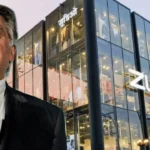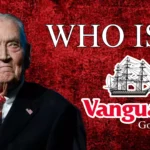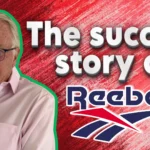The famous prancing horse is hard to recognize, and it has long enjoyed iconic status. How did the horse earn this crown, and what does the future hold for it?

According to many sources, Enzo Ferrari was born in Modena, Italy, on February 18, 1898. However, the birth wasn’t reported to the local registry office until February 20th due to a severe snowstorm. Alfredo Ferrari and Adalgisa Bisbini had two children together, and Enzo was Alfredo Jr.’s younger brother, who was also nicknamed Dino, a name that would show up in prominence later. Alfredo Senior, a Capri-born grocery store owner’s son, established a metalworking company in the basement of his home in Modena that he moved into, likely due to a lack of economic opportunities on the small island.
Table of Contents
The Early Years of Enzo Ferrari
One of the most significant events in young Enzo Ferrari’s life came at the age of 10 when he saw Felice Nazzaro win at Circuito di Bologna in 1908. This occasion motivated him to take up racing. His time would have to wait, however, as the Kingdom of Italy thrust headfirst into wars against the Ottoman Empire and into skirmishes with the Austro-Hungarian Empire, which would eventually lead to the country’s entry into World War One.
He was enlisted into the Italian Army’s Third Mountain Artillery Regiment during World War One. The majority of the combat took place in northern Italy, and Enzo’s family suffered even more sorrow when, in 1916, an epidemic of the Italian flu claimed the lives of both his father, Alfredo, and his older brother, Alfredo Jr.
Ferrari was forced to leave the Italian military after becoming quite ill during the 1918 flu epidemic, and the armed forces were looking to downsize either way as the war was coming to an end. The family business collapsed, and Enzo took to looking for jobs in the car industry following his recovery. In the end, he settled for a position as a test driver for CMN, an automaker in Milan that converted discarded truck bodies into small passenger vehicles after he unsuccessfully offered his skills to FIAT in Turin. Nevertheless, his competitive debut came in the 1919 Parma-Poggio di Berceto hill climb race, where he finished fourth.
He competed in the famous Targa Florio race in November 1919 but was forced to withdraw after his car’s fuel tank began to leak. He still finished ninth, which was considered a significant achievement at the time, owing to the sheer number of cars that suffered mechanical failures along with testing the limits of driver endurance. This experience quickly led him to land a job at the respected Italian car maker Alfa Romeo.
Ferrari won his maiden Grand Prix at the Savio Circuit in Ravenna in 1923. His best season was in 1924 when he won three races, including the Coppa Acerbo in Pescara, Ravenna, and Polesine. He was a well-known name in the Italian motorsport circuits by this time, and it coincided with a desire to take on managerial aspects of racing, which would lead him to the next stage.
Scuderia Ferrari and the Birth of a Legend
In 1929, Ferrari chose to retire and devote his attention to managing and developing the factory Alfa race cars. He eventually assembled a race team of superstar drivers, including Giuseppe Campari and Tazio Nuvolari. The decision was spurred on by the birth of his son, Alfredo, who was named after his late older brother and even shared his nickname, Dino. This team, Scuderia Ferrari, served as Alfa Romeo’s racing section. The Alfa Romeo P3 and the team’s outstanding drivers like Nuvolari helped the team achieve great success during this time.
The Prancing Horse: Symbol of Power and Tragedy
The prancing horse logo started to appear on his team’s vehicles. Francesco Baracca, an Italian fighter pilot, had designed and worn the symbol. Owing to good relations between them, Baracca’s mother gave Ferrari a necklace with the prancing horse on it before one of his flights during World War One in 1918. An Austrian plane shot down and killed Baracca. Ferrari utilized the prancing horse to design the emblem that would become the renowned Ferrari shield in honor of his death while serving.
Ferrari’s Struggles and Rise from the Ashes
Ferrari left Alfa in 1939 and started Auto Avio Costruzioni, a company that provided parts to other racing teams following a disagreement with Alfa’s managing director, Ugo Gobbato. Ferrari managed to produce two cars for the 1940 Mille Miglia race, which were driven by Alberto Ascari and Lotario Rangoni despite a contract clause prohibiting him from racing or designing automobiles for four years. Ferrari’s factory was forced to start producing weapons and trucks for Mussolini’s fascist government when World War II broke out.
After the factory was bombed by the US Air Force, Ferrari moved from Modena to Maranello. He then decided to start producing automobiles after the war, which led to him establishing Ferrari S.p.A. in 1947.
Racing Success and Controversies
Enzo chose to compete against the dominant Alfa Romeos and lead his team. The team made its open-wheel debut in Turin in 1948, and its first victory came in Lago di Garda later that same year. The 1949 24 Hours of Le Mans saw the Ferrari 166 MM, driven by Luigi Chinetti and Peter Mitchell-Thomson, win the first significant victory. The motorsport victories would rack up, but Enzo Ferrari’s single-minded focus on racing prevented the company from making significant profits, and the first Ferrari produced for the consumer market only came in 1952 with the Ferrari 250 GT, a V12-powered grand tourer.
Controversies associated with racing continued to pile up. Ferrari had an autocratic management style and was known for pitting drivers against one another to try to boost their performance. Some detractors contend that Ferrari purposefully increased the psychological strain on his drivers, fostering intra-team rivalries and a climate of fierce competition for the title of best driver. He thought that psychological pressure would produce better results for the drivers, said Ferrari team driver Tony Brooks.
Eight Ferrari race car drivers lost their lives while operating them between 1955 and 1973. Ignazio Giunti, Peter Collins, Luigi Musso, Alfonso de Portago, Wolfgang von Trips, Lorenzo Bandini, and Alberto Ascari. Ferrari was compared to the god Saturn, who consumed his sons, in the Vatican newspaper L’Osservatore Romano, even though such a high death toll was not unusual in motor racing at the time.
FIAT’s Entry and Ferrari’s Commercial Success
Eventually, FIAT purchased a 50% stake in Ferrari. An immediate outcome was an increase in the amount of investment capital that was available, and right away construction on a factory expansion to move production of the Ferrari-powered FIAT Dino from FIAT’s Turin plant began. Investment in new models at the top of the Ferrari range also increased.
FIAT’s involvement was necessary for new models to roll off the factory. Profit-making success followed with the likes of the 308 GTB/GTS, followed closely by the 328 and the 365 Daytona, a remarkable feat because they rolled into sales in the 1970s, a time of oil shortage. The legend of the Ferrari V12 and V8 engines started from this period, owing to high performance and the sense of speed it provided drivers of those Ferraris.
Testarossa and the Rise to Cultural Icon
However, they were still seen as a middling Italian car brand, and the rich young executives still wanted Aston Martins, Jaguars, and Lamborghinis. Ferrari would storm onto the scene and solidify themselves as a cultural tour de force with the Ferrari Testarossa in 1984.
Its sleek, fighter-jet-inspired design, alongside a powerful V12 engine, won everyone’s hearts, and it became the best-selling Ferrari of the 20th century until the even more outrageous F40 came out after its inclusion in the popular Miami Vice TV show starring Don Johnson and Philip Michael Thomas. Those same young executives wanted a Ferrari Testarossa the most, and Ferrari’s brand image blew up overnight. The white Ferrari Testarossa that appeared regularly from season 3 onwards was a character of its own.
Enzo’s Farewell and the F40 Legacy
By this time, Enzo Ferrari’s health was slowly failing, and while he still spoke to interviewers and generally gave directions to the company, it was soon going to be time for him to go. The last car he had the honor of overseeing was the aforementioned F40, the first car in history to break the 200-mile-per-hour barrier. Current drivers called the car a mix of sheer terror and raw excitement. It was the personification of supercars.
The F40 was as light as a feather, weighing only 1,100 kilograms, almost 400 kilograms less than the McLaren F1. Only 11 of its exterior body panels were made of aluminum, Kevlar, or carbon fiber. The only sign of standard comfort inside the cabin was the air conditioning, while the glass outside was made of lightweight Lexan, a clear polycarbonate.
At the age of 90, Ferrari passed away in Maranello on August 14, 1988. Although no official cause of death was given, heart failure, which is common in elderly northern Italian men, is suspected. He could not have asked for a better send-off, and it coincided with reading the arrival of the ultimate driving machine beyond his wildest dreams.
The 90s would continue to see excellent Ferrari-driving machines such as the Ferrari F50, the 355, and the 575.
The Success Story of Tesla: Fact, History or Case Study
The Success Story of Lamborghini’s: History, case Study
The Enzo: A Tribute to the Founder
Ferrari introduced and called its fastest model at the time the Enzo, after, of course, the company’s founder, Enzo Ferrari, from 2002 to 2004. As a continuation of the F40 and F50, it was originally going to be called the F60, but Ferrari was so happy with the end product of the design and engineering process that they decided to call it the Enzo as the ultimate honor.
Each of the 399 made, minus the 400th, which was donated to the Vatican for charity, had a price tag of $650,000 when it was first made available to devoted and frequent customers.
Ferrari’s Modern Era and the Electric Shift
Other than that, the mid-2000s would see the likes of the Ferrari 360 and F430, both stellar cars with a degree of reputation for being reliable. A silver Ferrari F430 Spider would make its appearance in a film reboot of Miami Vice starring Colin Farrell and Jamie Foxx as a cool throwback, even though it flopped.
The FCA Group, formed by the union of the automobile producers Fiat and Chrysler, announced the division of its luxury brand Ferrari on October 29, 2014. The goal was to establish Ferrari as a standalone company with a 2015 IPO to sell 10% of the company. After the market closed on October 20th, 2015, Ferrari’s initial public offering was officially priced at 52 dollars per share. Ferrari was finally free of FIAT after a long time, making a rich history of close association come to an end.
Scuderia Ferrari went on to achieve accolades all this time, with its Formula One team presenting the well-known Michael Schumacher as one of the greatest race car drivers of all time, winning several F1 championships. It continues to stay at the cutting edge of F1 racing technology.
The electric vehicle age is upon us, and Ferrari has not been immune. Ferrari’s entire model lineup will be made up of 40% internal combustion engine (ICE) models and 60% electrified models by the end of 2026. The full electric and some full hybrid models will make up the remaining 60% of electrified models. And that’s not all. By the end of 2030, the percentage of these models will change, with the entire Ferrari lineup consisting of 20% ICE models, 40% hybrid models, and 40% fully electric models.
Like the current full hybrid models like the SF90 and 296 GTB, Ferrari’s racing division will contribute technology to the new hybrid vehicles. To create the electric motors for the new all-electric models, Ferrari has already established a brand-new development facility in Maranello for electrified cars. Long-term plans may include in-house battery production as the competitive advantages of having such an asset are becoming clearer.
The Purosangue and a Bright Future
Finally, in September 2022, Ferrari will reveal the eagerly anticipated Purosangue, its first-ever SUV. A Ferrari SUV may seem out of place, but Lamborghini, a close rival, proved it could work with the Urus. Throughout the life of the Purosangue, Ferrari has capped the shipments at 20% of its total production volume.
Ferrari registered a valuation of 30 billion dollars in March of 2020. The future-forward is secure and bright for Enzo Ferrari’s legacy to dominate another 100 years.
I hope you got the answers to all your questions like – “The Ferrari success story and case study” and “Ferrari case study” “Ferrari marketing strategy” “Who owns Ferrari now” “When was Ferrari founded” “Ferrari business strategy” “Ferrari Marketing” “Ferrari target market”
Have you already heard of Ferrari’s journey, and are there any other details that you would like to add to this article? Share it in the comments! And if you’d like to read more inspiring business articles, then make sure to check out our blog!










